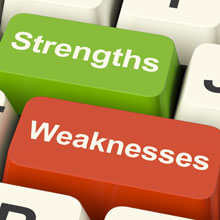What is strengths based learning?
Using a strengths-based approach has been proven to be one of the most effective strategies for twice-exceptional (2e) students (Baum, Schader, Owen. 2017). This does not have to be limited to our 2e population--it has a very positive impact on all students. What if at work, you always had to work on your least developed skill, or greatest weakness? As adults we usually choose work (and play) that allows our strengths to shine.
This 3:59 minutes video is older, but gives a short introduction to strengths-based learning (Dr Gary Pritchard).
Strength-based is not:
- A way to get students to work on their areas of weakness
- A way to get students to turn work in or otherwise overcome bad habits or poor behavior
- In the service of the disability (simply meaning that you don't focus on remediation)
Strength-based IS focusing on:
- The student’s ability, talents & interests
- Opportunities rather than problems
- Strengths more than weaknesses
- What they CAN do rather than what we can't do
The strengths-based approach can be differentiated for students to align curriculum and instruction with:
- Student cognitive styles
- Learning preferences
- Profiles of intelligence (Baum, Schader, & Hebert, 2014)
- Structure (placement, scheduling)
- Classroom environment
- Curriculum
- Instruction at all tiers
- Learning materials
- Personnel
- Social-emotional supports
Remember that strengths are not only academic--they may be be expressed through social skills, leadership, or a specific interest area.
